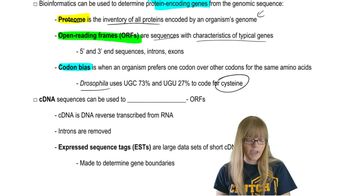Here are the essential concepts you must grasp in order to answer the question correctly.
Genome Sequencing Techniques
Genome sequencing involves various techniques to determine the complete DNA sequence of an organism's genome. Common methods include Sanger sequencing, which is suitable for smaller genomes, and next-generation sequencing (NGS), which allows for rapid sequencing of large genomes. Understanding these techniques is crucial for selecting the appropriate method for sequencing the genome of the newly discovered archaea.
Recommended video:
Archaea Characteristics
Archaea are a distinct group of microorganisms that differ from bacteria and eukaryotes in their genetic, biochemical, and physiological properties. They often thrive in extreme environments, such as hot springs, and possess unique adaptations, such as distinct membrane lipids and ribosomal RNA sequences. Recognizing these characteristics is essential for understanding the specific challenges and considerations when sequencing their genomes.
Recommended video:
Bioinformatics in Genomics
Bioinformatics is the application of computational tools to manage, analyze, and interpret biological data, particularly in genomics. After sequencing the genome, bioinformatics plays a critical role in assembling the sequence, annotating genes, and comparing the genome to other organisms. Familiarity with bioinformatics tools and databases is vital for effectively analyzing the genomic data obtained from the new archaeal species.
Recommended video:
 Sanders 3rd Edition
Sanders 3rd Edition Ch. 16 - Genomics: Genetics from a Whole-Genome Perspective
Ch. 16 - Genomics: Genetics from a Whole-Genome Perspective Problem 1
Problem 1 Verified step by step guidance
Verified step by step guidance


